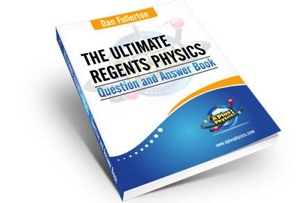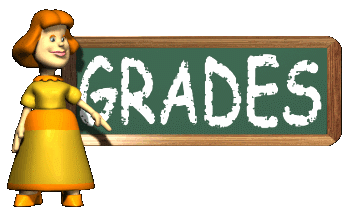So last year I took every single question from the last 17 NY Regents Physics exams, organized them by topic, and printed them neatly into worksheet / workbook formats for myself and others to use. They’ve been pretty popular, but have also been a fairly high maintenance item, as I have been receiving at least 10-15 e-mails per week about the worksheets. Some requests have come from teachers asking if I have created an answer sheet to go with them. Other requests have been from students looking to check their answers. Some have even been from students posing as instructors attempting to find the answers to the worksheets. But far and away, the most popular question has centered around whether I might offer a print version of the worksheets.
It’s taken awhile, but I’ve finally cleaned up all the sheets, arranged them into a workbook format, solved every single problem, added answer sheets, and sent them off for publication. The result — yesterday, The Ultimate Regents Physics Question and Answer Book was released.
I’m planning on leaving the individual worksheets available for download on the APlusPhysics site — the book is merely provided as a convenience for those who’d rather have a hard copy, bound compendium of all the worksheets, with the answers included. Because these sheets are also popular as homework assignments, quizzes, etc., I don’t plan on posting the answer sheets publicly… that’s just making things a little too easy for students hoping to avoid productive work. The list price on the book is $11.99, which (typically) Amazon discounts within a few weeks of publication. I think that’s a reasonable price for a resource that took me many, many hours to compile, with the goal of hopefully recouping the costs required to publish the book within a year or so if all goes well.
Having said that, last night I received a troubling e-mail. Before even one copy had sold, I received a request asking if I would donate copies of the workbook to cover an entire physics course at a school. Now, I understand there’s no harm in asking, so I politely responded that the cost for any donated/promotional copies come directly out of the pocket of a high school teacher (me), and that the entire content was already available for download and printing direct from the APlusPhysics website. The follow-up, however, left me troubled. The response stated that the copies were for an inner city school and therefore computers and Internet access to download and print the files wasn’t reasonable.
Maybe I’m being naive, but I have trouble believing that there are school districts (and individual schools) that are SO poor that there isn’t a single computer with an Internet connection anywhere in the school. Or let’s say that there aren’t ANY computers in the school — how can not one teacher have access to a computer and Internet to obtain the files on their own time? And in what world is it reasonable that I should pick up the costs to print and ship a volume of copies to a school where they can’t find a way to download and print freely available files (which I also pay to host)?
Rant ended. I’m more than happy to give away a ton of my work (and time) for free, but there are some costs associated with making these resources available. The software to create the site, the hosting fees, publication costs, licensing costs, etc. Almost all of the content in the books is already freely available on the site for educational use, and I LOVE when folks make use of these resources. But, the reality is that all of these things have some cost, and if I want to continue to build a terrific physics resource for our students, a few of the items on the site have to generate enough income to cover the costs of the site.
Now, with that out of the way, I’m excited to be diving into the next project at full speed — review / guide books for the new AP-1 and AP-2 courses. Background work / development has been going on for over a year, and, if all goes as planned, the first draft should be underway within a couple weeks!!!!!



 Not all assignments need to be graded. Many of our labs and hands-on projects serve to build understanding, but a full rigorous assessment of these multi-faceted projects is complicated in an SBG system. After struggling with this the first half of the year, I realized that I could assess these projects based on a single skill, or at times, not at all. It’s important to keep in mind the ultimate goal is student learning and understanding, NOT grading. The more I embrace this fundamental change in thinking, the more freedom I enjoy in designing activities to allow students to build their own understanding. Grades are NOT the goal, learning is.
Not all assignments need to be graded. Many of our labs and hands-on projects serve to build understanding, but a full rigorous assessment of these multi-faceted projects is complicated in an SBG system. After struggling with this the first half of the year, I realized that I could assess these projects based on a single skill, or at times, not at all. It’s important to keep in mind the ultimate goal is student learning and understanding, NOT grading. The more I embrace this fundamental change in thinking, the more freedom I enjoy in designing activities to allow students to build their own understanding. Grades are NOT the goal, learning is.